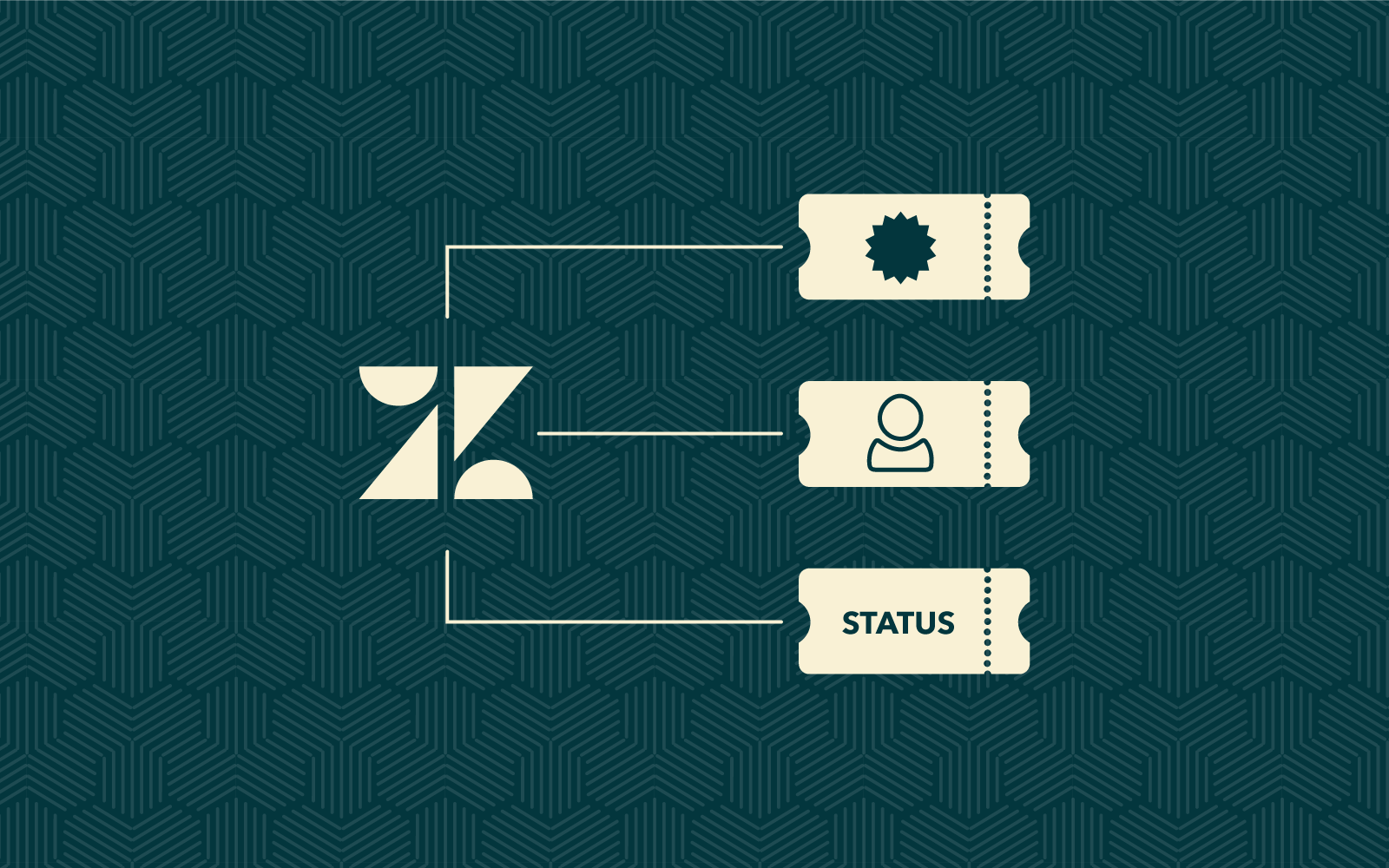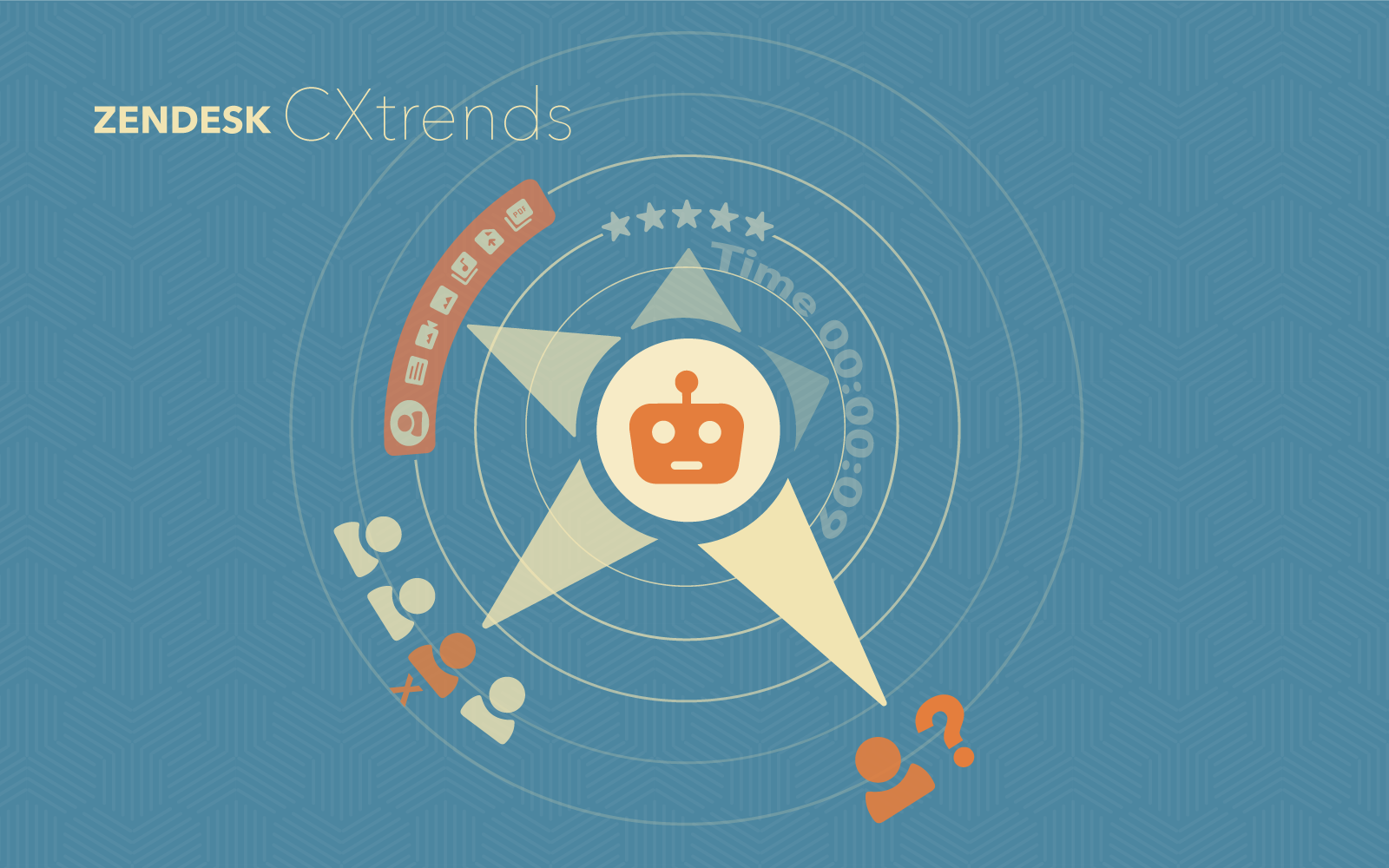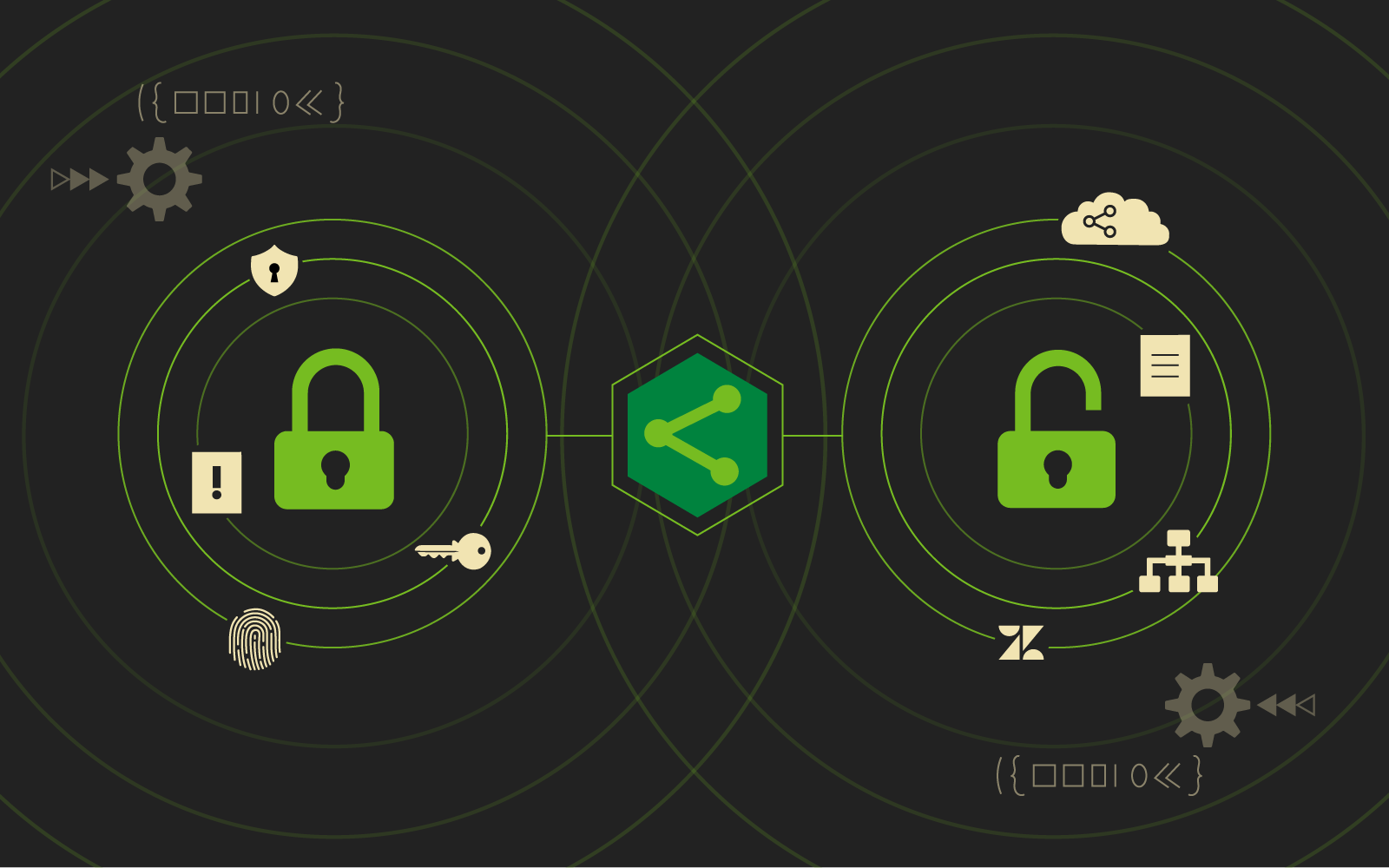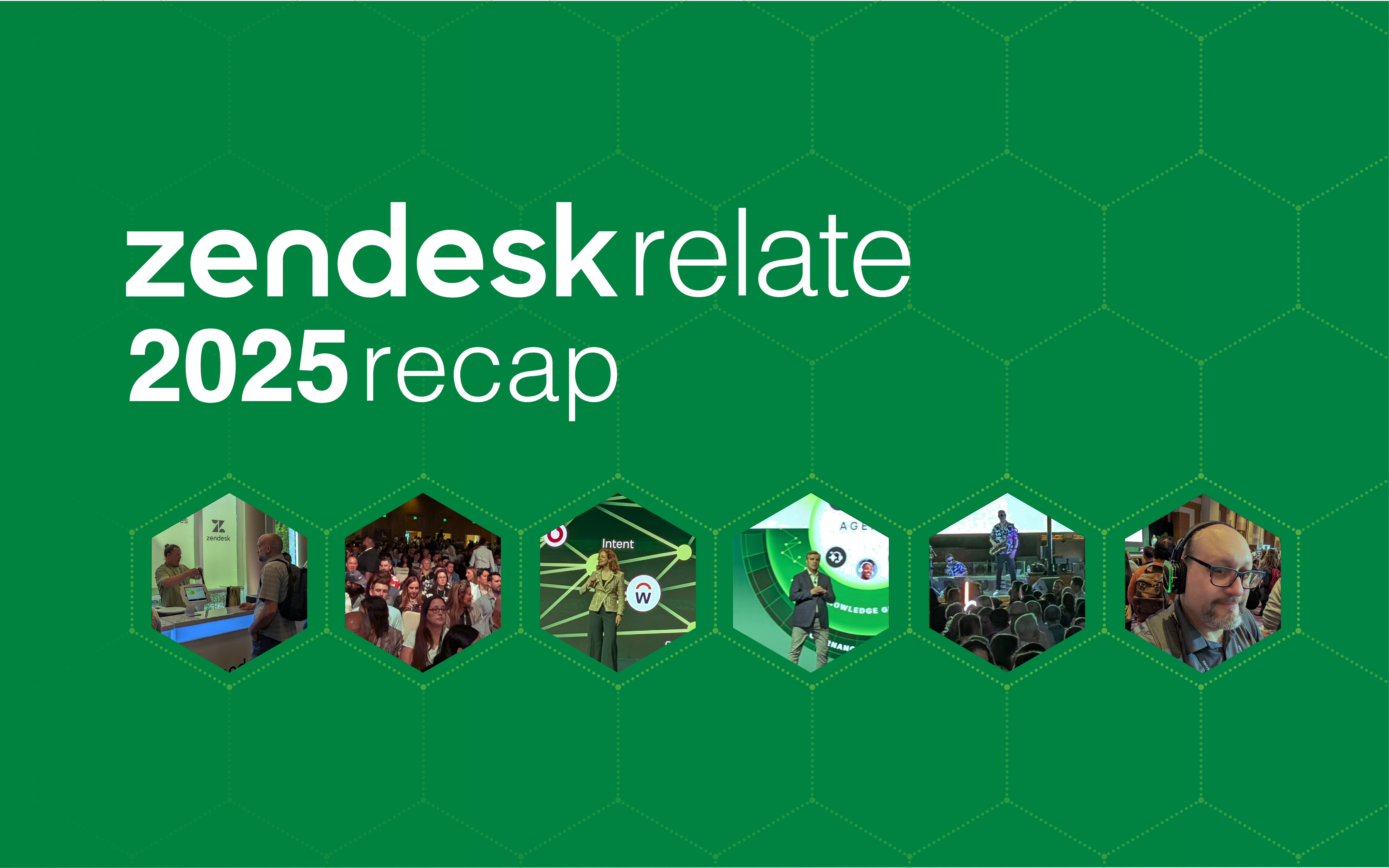If you’re a Zendesk Admin or Agent, you’ll be happy to learn that Custom Statuses have finally been implemented.
Solutions Architect and Zendesk Guru, Brandon Tidd talks about this long awaited Zendesk update and answers these questions:
- What are Zendesk Custom Statuses?
- Why did it take so long for Zendesk to implement Custom Statuses?
- Who uses Zendesk Custom Statuses?
- What problems do Custom Statuses solve?
- How do you add Custom Statuses to Zendesk?
- What should people know when implementing Custom Statuses?
- What are the benefits of Zendesk Custom Statuses?
Interview Transcript
James: Zendesk Custom Statuses have finally arrived, and joining me to talk about this long anticipated update is one of our Solution Architects and Zendesk Guru at 729 Solutions, Brandon Tidd.
Thanks for joining me, Brandon.
Brandon: Happy to be here, James.
What are Zendesk Custom Statuses?
James: So let’s start things off with what are custom statuses?
Brandon: Yeah. So if you… let’s talk, take it a step back further and even talk about what a Zendesk Ticket Status is.
So, when a Zendesk ticket comes in, it comes in at a status of “new”, because it’s a new ticket, nobody’s worked it. Once somebody picks up that request, be it a phone call or an email, or a messaging request, they start working on that ticket, that ticket moves to a status of “open”. So this is really the ticket life cycle, as it were through the, through its life as a ticket inside of Zendesk, the customer journey of conversational support within the Zendesk ticketing system.
And so historically we’ve had six statuses, “new”, “open”, “pending”, “on hold”, “solved” and “closed”. And those were immutable. No matter what instance of Zendesk you had, no matter where you lived in the world, no matter what your workflow was, you were stuck with those six statuses. And, you know, from an architectural standpoint, we could always get around it with like custom fields and triggers and different, wizardry to help achieve some more complex workflows beyond what those six statuses would allow for. But we were always kind of working against the system opposed to working with the system out of the box.
Why did it take so long for Zendesk to implement Custom Statuses?
James: Quick question for you, and I think I know the answer, why wasn’t the functionality for adding custom statuses implemented from the beginning?
Brandon: Yeah, so I think when Zendesk started, you know, you’re going back 15 years now, they were really pioneers in the customer service space. You know, before Zendesk customer service software wasn’t really thought about as beautifully intuitive or simple or easy to use, or navigationally fluid for the agent.
All the customer experience side was focused on making sure that the end user or the customer had a good experience. Not a lot of focus was put in on making sure that the person who’s handling that customer request was also having a good experience. And so when Zendesk was founded, they wanted to keep it simple, keep it simple, silly, we’ll say, because they didn’t want a million different variations because then they were no better than the next iteration of customer service software that was making things intensely complex.
So they wanted to simplify it. And then in some cases they oversimplified or perhaps they made it so simple that it put some customers in a box. And while that might have worked for their initial test use cases, and for every use case for the past 15 years, because it had to, the customer experience journey on the agent’s side, on the internal side has evolved past the point of those six statuses being revolutionary, they are now kind of hindering the experience, and I think Zendesk heard that from their customers over the years, and they wanted to find a way to loosen the reins on status without completely destroying the fabric of what made Zendesk simple to use in the first place.
Who uses Zendesk Custom Statuses?
James: Okay, so we’re talking about, I think Zendesk Agents, Zendesk Admins as well. Is that fair to say?
Brandon: Yeah, so when we talk about the people who are using Zendesk internally to respond to customer requests, whether it be the Agents on the keyboards or the Admins constructing it on the backend, you know, our focus is when we’re configuring Zendesk for a customer, we’re, we’re primarily focused on what the backend experience looks like, back of house or inside of the kitchen, so to speak, when we’re talking about how we configure Zendesk to make it more efficient.
What problems do Custom Statuses solve?
James: What kind of pain points do Custom Statuses resolve?
Brandon: Yeah, so anybody who has a more nuanced, or more complex workflow than just “request comes in, Agent resolves”. So, you know, the historic statuses are “new” – I talked about as a new request is kind of fairly obvious. “Open” being somebody is working on that ticket.
Really the only two active statuses or “statusii” that were available were “pending”, which is pending a response from the end user. Or “on hold” now both the end user and the agent are waiting on a third entity be it a vendor, be it a manager, another department.
That ticket is stuck. It can’t be solved because the issue wasn’t resolved. But you’re no longer waiting on the customer and you can’t do any work to further that impact. So that’s really the original use case for Zendesk is customer… is a B2C request. A consumer comes in, makes a request of the support team, maybe the support team needs to escalate that to another division or another partner, they put that ticket on hold or they didn’t get enough information to resolve the request.
So they put it back into “pending”, while it’s pending response from the end user. And so it is kind of the least common denominator of statuses. What we found is that, at least in the past five years that I’ve been working alongside Zendesk, there are many, many, many use cases where somebody would like to be more nuanced versus this ticket is on hold with the legal department versus the marketing department.
This ticket is pending a response from somebody else at the end user’s… And, but we know what we need from the end user. So there’s just lots of nuance in that for anybody who wanted to go deeper than “open”, “pending” or “on hold”. And now we can, before we always had to use it as like a custom field, where we would create that nuance.
So we would go to a global status of “pending”, and then within that ticket we could set an additional custom field to be “with legal” or “with marketing”. And so, from a reporting standpoint, it became an issue from, just an overall looking at the view in queue. It became an issue. And it was an issue that enough people finally complained about that Zendesk cried uncle and said, “Okay, it’s, it’s time to, evolve the custom statuses.”
How do you add Custom Statuses to Zendesk?
James: Let’s dive into the nitty-gritty. How can Custom Statuses be added to Zendesk?
Brandon: For instances that have access to Custom Statuses – and you’ll know, because you’ll see this as a new feature. It started rolling out about a month ago. And, under the “Objects and rules” section of your Admin Center.
And so if anybody doesn’t know how to get to the Admin Center, we’re clicking on this – some people call it the four square logo. I call it the four-leaf clover logo. These four boxes in the upper right and opening your Admin Center, obviously you have to be an Admin to be able to access this feature. And once you’re in the Admin Center under “Objects and rules” and under tickets, you should start seeing new Ticket Statuses available.
And if you don’t see this, contact your Zendesk Account Manager, I’m sure they would be happy to upgrade you to the point where you should be able to see this. But this is, in general, released now, so every instance that has access to this should be able to see this Ticket Statuses window.
And out of the box when you click on it, if you haven’t done it yet, it’s gonna give you an option to activate it. There is no risk in activating this because all it’s going to do is give you your standard current statuses – “new”, “open”, “pending”, “on hold”, “solved”, “closed” – in this custom format. And so it’s gonna show you here that I have a new ticket and the description that’s available to the agents and the description that’s available to the end user.
And we’ll talk about what that means in a minute. But in terms of activating it, once you’ve turned this on and activated it in your instance, you then have the ability to go in and not only create your own custom ones, but even edit the ones that are already there, which I think is a really nifty feature.
What should people know when implementing Custom Statuses?
James: What should people be aware of when implementing Custom Statuses?
Brandon: Just know that although they finally caved and gave Admins the ability to create Custom Statuses, we are still operating within the framework of Zendesk. So what were classically, the “custom statuses” or the “global benchmark statuses” rather, have now become “Status Categories”.
So we’ve got this kind of new layer of Zendesk, status implemented in these instances where we can have multiple categories within a … or multiple statuses rather within a category, but you still do have to classify things at the highest level as either “new”, “open”, “pending” “on hold”, or “solved”. So really the changes that we’re making to customer services are more aesthetic for either your end users or your Agents, and very, very helpful. But you still have to fall within the framework of what Zendesk would originally consider a custom or a global status.
James: Can you walk us through creating a Custom Status?
Brandon: Yeah, so it’s really simple. Once you’ve got this turned on, you’ll see your existing statuses here, “new”, “open”, “pending”, and categories of status.
If I wanna create my own, I hit the create ticket status button up here, and I’m gonna choose that category. So it’s still gonna be “open”, “pending”, “on hold”, or “solved”. And this, to me, the “solved” is really neat because it gives you the ability to differentiate between maybe when things were solved or maybe when they were, and I like to say this: “solved with gratitude” because everybody that’s ever used Zendesk has the problem of “thanks”, where it reopens the ticket when somebody says “thanks”. And, so creating a new category for solved tickets where you can say this number of tickets were solved, where the only action item was that the customer reopened and solved with gratitude. So when you look at your one touch numbers, you can maybe compute “solved” plus “solved with gratitude” to get to your, your final answer.
But regardless, when you select your ticket category, you can give the name for the Agent view and also the description for the Agent view. So this is what the tool tip that is when you hover over the statuses, this is a little more direction that you can give to the agent that’s working on the inside of the ticket.
And then you can show the end users a different name, a different status, or a different description. So that, if it is in a certain part of your process, you want to visualize that differently to the end user. You now have the ability to do that, which I think is really, really cool. And then you can set it as active.
So if you have seasonal statuses that are only relevant at a certain time of the year, you can activate and deactivate these Custom Statuses as you go, but once you’ve created one of these statuses, it’s going to show up here. So we created the one “waiting on legal”. It’s “on hold”. So “on hold” traditionally means we’re waiting on that third party.
The end user doesn’t have any more information to share. The Agent can’t do anything with that ticket, so it’s not “open” anymore. So now it’s “waiting on legal” and very creatively we put in here, “use this status when waiting on legal”, just in case nobody understood what the waiting on legal aspect meant.
We don’t necessarily want the customer to know when they’re looking in the portal that this is stuck waiting on legal. So we mask that with the end user’s view of “we are almost there”. And so when we select this option, we can come into our ticket here and we can choose from these different options. So now we can say, instead of just “on hold”, we can literally say that this is “waiting on legal”.
So once we’ve set this to “waiting on legal” now, in addition to the back of house being “waiting on legal”, we want to let the customer know in their Guide portal that “we’re almost there”. So you can see that that status has changed here on the public facing or the end user facing side of things that it’s now showing “we’re almost there” instead of just showing “open”. So I think about this like the pizza tracker that you’re familiar with, where you can actually, as a user, see exactly what stage it’s in. And this gives you a lot more granular, control over waiting on – and you can see here my tool tip that’s even hovering over it as it’s saying, “just waiting on final approval” so you can get a lot more granular with these statuses.
Which, you know, to the folks that have the more complex workflows that we’ve introduced this to – I’ll admit I was a skeptic when I first heard that they were loosening the reins on this. I was like, oh man, everything was so simple and so orderly. This is gonna be like chaos. But the way they’ve implemented it, it’s very well orchestrated, very well thought out.
I don’t necessarily think it needed to take them 15 years to get to this point, but the best time to plant a tree was 20 years ago. The second best time is today, right? So, it’s very exciting for us and it frees up a lot of our flexibility and when we’re orchestrating it, we can think about our Zendesk architecting and Zendesk workflows differently now because we have this tool that’s available globally to everybody that’s using Zendesk.
What are the benefits of Zendesk Custom Statuses?
James: What’s really nice about that too, especially in this example, is that the end user or the customer, I guess in this case, is seeing progress. They’re not just seeing a static, you know, status for their ticket.
They’re actually seeing progress being made. And I think, you know, that’s gonna go a long way for some of the complex workflows that you guys encounter.
Brandon: Yeah, and I would say that the really nice thing because of the way they’ve implemented Trigger Categories or Custom Status Categories is it doesn’t break your existing workflows.
It doesn’t break your triggers. Even if you deactivate something later, it will go back. Like, let’s say we didn’t have a need for this particular category anymore and we just went in and deactivated it. Any tickets that held that status previously would just default back to their previous ticket category.
So any of these tickets would just go back to being “on hold” generically because they didn’t have a home anymore from a Custom Status perspective. So you really can turn this on, turn this off. There’s some things in Zendesk, you have to be really careful when you’re playing with them in a production environment. Custom Status is one of those things that you can really get your feet wet and move with confidence because you’re really only enhancing the experience with not much risk to what the experience is currently.
James: Well, thanks as always, Brandon, for joining me and talking a little bit about Zendesk.
Start Driving Growth with Customer Service
729 Solutions can help you scale your instance of Zendesk into an award-winning experience for both your customers and your agents!



